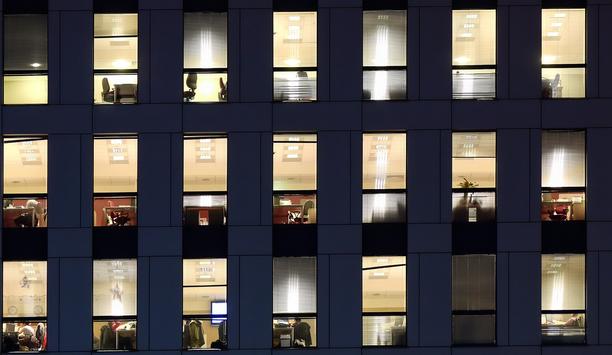When it comes to airport security, there is a critical need for technologies that detect exterior threats and protect the perimeter. By using an advanced FLIR perimeter intrusion detection system, airports receive unmatched threat recognition, target tracking, perimeter defence and response capabilities. The result is greater efficiency, exceptional safety and enhanced customer experience for passengers, employees, aircraft and facilities.
Norman Y. Mineta San Jose International Airport (SJC) is the gateway to Silicon Valley, providing transportation to 15 million passengers annually. SJC is recognised within the industry as one of America’s fastest‐growing major airports over the past four-year period, based on percentage increase in passenger seat capacity.
Perimeter security upgrade
Located in San Jose California, SJC is a robust engine of economic stimulus, transportation and international commerce. The airport is within an 18-mile radius of 6,600 technology companies in Silicon Valley and serves travellers employed by many of the world’s Fortune 500 enterprises, including Apple, Google, Facebook and Intel.
Ensuring secure operations is critical to the success and customer experience of SJC users. The airport occupies 1,050 acres of land and its perimeter spans six miles. With such a vast property and a high throughput of traffic, protecting the perimeter from external threats is essential.
Driven by high-profile intrusion incidents, perimeter security has become a top priority for airports in recent years. From 2004-2016, there were 345 perimeter breaches at 31 major U.S. airports, according to a report by the Associated Press. Like many airports around the country, SJC also faced challenges and crises of illegal trespassing of unauthorised individuals, despite the airport meeting all federal security regulations. This raised concerns about passenger safety.
Mineta San Jose International Airport
With a heightened need for better perimeter protection, SJC launched a multi-million dollar, three-phase initiative to upgrade its entire outdoor perimeter security system. The first two phases focused on physical upgrades to the fence line, raising 10,000 linear feet of fence from seven feet to 11 feet in critical areas of the airport.
FLIR Elara FC-Series ID, ioi HD Analytics, Triton PT-Series cameras with FLIR Latitude Network Video Management System
FLIR Elara FC-Series ID, ioi HD Analytics and Triton PT-Series cameras with FLIR Latitude Network Video Management System provide multiple layers of protection. Phase three was designated for fence technology enhancements through state-of-the-art video surveillance and detection systems.
“In response to the cluster of perimeter breaches within a relatively short time period, our evaluation showed that the airport perimeter, with its seven-foot-tall fence, was indeed technically in compliance with current federal security requirements,” said Airport Deputy Director of Operations Bob Lockhart. “However, we also recognised some opportunities to improve the effectiveness of our perimeter, both from a perception perspective, as well as an actual strengthening of some of our perimeter,” he continued.
Trial with various security solutions
To find the best fence line analytic detection technology, SJC consulted National Alliance for Safe Skies, Inc. (Safe Skies), which is a federally funded non-profit organisation that assists airports in the research, testing and evaluation of security technologies.
SJC’s partnership with Safe Skies began in 2014 when the non-profit first discussed the airport’s perimeter security needs. Safe Skies was later tasked to review a variety of perimeter defence systems to determine what solutions would be most effective at SJC.
Safe Skies tested and evaluated six different types of technology on-site including, thermal cameras, thermal cameras with video analytics, behavioural video analytic systems, pressure sensor buried cables, laser detection systems and wireless cameras. Each system was tested for two weeks, and Safe Skies presented a performance report to SJC for each one. After a detailed analysis, SJC selected an end-to-end perimeter intrusion detection system (PIDS) from FLIR Systems Inc.
FLIR PIDS solution
The FLIR PIDS solution is composed of 57 FLIR Elara FC-Series ID thermal analytic cameras and 50 FLIR ioi HD Analytics Bullet cameras along the fence line. The system also includes four FLIR Triton PT-Series dual sensor cameras with thermal and visible light sensors with pan-tilt tracking.
For the SJC deployment, Latitude VMS integrates with the Software House’s C-CURE access control platform
All of this technology fully integrates into the existing FLIR Latitude Network Video Management System, which is part of the FLIR United VMS family of products. As an ONVIF Profile S compliant platform, Latitude VMS enables seamless integration with edge devices and third-party systems.
For the SJC deployment, Latitude VMS integrates with the Software House’s C-CURE access control platform.
Distinguishing between an animal and human
“The additional thermal and infrared camera coverage has greatly enhanced our abilities to detect unauthorised activities around the perimeter of our airfield,” Lockhart explained. Ken Castle, Vice President of business development at Ojo Technology, the systems integrator for the project, also described the advantages of the FLIR thermal technology. “Thermal cameras provide the data and visual confirmations that are lacking from so-called traditional fibre-based ‘shaker fence’ systems, which generate alarms when objects strike a fence or something creates vibration,” Castle explained. “The problem is that such alerts could be caused by dogs, wildlife, bicyclists bumping into the fence, tree branches or winds—none of which pose security threats.”
Castle continued, “With thermal cameras, the embedded analytics can immediately distinguish between an animal at 50 yards and a human at 300 yards, following their direction of movement. The viewing trajectory can be narrowed to cover just the fence, or widened to include territory in front of or behind the fence. The bottom line is that thermal analytics provide definitive visual information and virtually eliminate unnecessary or inconsequential alerts.”
Thermal cameras continue to be the industry standard for 24/7 perimeter monitoring and the technology is a key part of SJC’s PIDS solution.
Installation of a perimeter fence technology system
In September 2016, the U.S. Department of Transportation and the Federal Aviation Administration awarded SJC an $8.1 million grant for the design, purchase and installation of a perimeter fence technology system. Deployment of the FLIR PIDS solution began shortly thereafter.
The project had an initial 150-day or a five-month turnaround with work beginning around the holidays in December 2016. As the systems integrator, Ojo Technology oversaw the phased commissioning of the project.
Ojo engineers preconfigured the cameras and servers, programmed the analytics for all thermal cameras, tested the functionality of each camera under a variety of lighting conditions, and worked with the airport security command centre and its systems subcontractor to incorporate the new cameras into the existing network. Installation was completed in the fall of 2017, and, afterward, Ojo worked closely with FLIR and SJC to fine-tune the system for optimal functionality.
Integrator for PIDS
“With such an aggressive schedule, Ojo Technology was instrumental in seeing the PIDS solution deployment through,” said Daniel Gundlach, Vice President and General Manager of security at FLIR. “Likewise, the collaboration, technical skill and ingenuity among the FLIR, SJC and Ojo teams was remarkable and a key reason why the project is such a success.”
Upon detection of an object approaching the fence line, the FC-Series ID thermal camera, initiates an analytic alarm hand-off
“The success of a technical solution like the San Jose Airport PIDS project is dependent upon a strong partnership among all participants—from FLIR as the manufacturer to the integrator to the end user,” said Neil Roberts, FLIR security director for the PIDS deployment. “In this case, all parties were committed to seeing this project through to the end and addressing any technical needs that arose along the way.”
Threat recognition and response
The advanced FLIR PIDS solution is designed to deliver superior threat recognition and response. Upon detection of an object approaching the fence line, the FC-Series ID thermal camera, initiates an analytic alarm hand-off to the PT-Series camera for auto-tracking.
The FLIR HD cameras provide a colour visual of the target for identification and verification. Through Latitude VMS, security operators manage response capabilities such as alarm functions, notifications and real-time interactive alarm maps.
Video monitoring with perimeter intrusion detection
“SJC has used FLIR cameras and Latitude products for many years,” said Lockhart. “We appreciate our FLIR end-to-end solution and the ability to expand our current camera system with new perimeter cameras to enhance our current video monitoring and provide additional perimeter intrusion detection.”The safety of passengers, airline employees and service workers is greatly enhanced"
A defining feature of the airport’s PIDS solution was that all technology components were provided by FLIR, which created an advantage for integration and solution performance.
Open platform software management system
“An all-FLIR system provided a tight integration to accomplish the goal of heightening security for the airport,” Castle said. Castle continued, “In theory, an open platform software management system can accommodate a variety of camera manufacturers and models in addition to ancillary security systems such as access control, intrusion alarms, public address and intercom systems, and blue light emergency phones. However, in actuality, the integration of various third-party components can be challenging as different brands of firmware in varying camera models and manufacturers don’t always provide consistent levels of performance, such as resolution and other features. This can be avoided entirely by deploying one end-to-end solution from a single manufacturer.”
“The upfront and early design services that FLIR offers through sales support engineers and through our Raven Site Planning Tool help reduce the risk of non-conformance and ensure design stays on budget. The end result is optimal system performance and peace of mind,” Roberts from FLIR explained. “At FLIR, we strive to be the airport’s trusted partner not just for today’s security needs, but also for the future.”
Enhanced security and safety at the airport
“The solution provides ongoing visibility of vehicle and cycling traffic along the outer fence line, as well as the movement of aircraft, cargo loaders, delivery trucks and service vehicles within the perimeter,” Castle said. He added, “Bottom line is that the safety of passengers, airline employees and service workers is greatly enhanced, and the expanded situational awareness gives the airport more options for responding to potential areas of concern.”
Having successfully implemented a robust FLIR PIDS solution to protect the airport perimeter, SJC plans to execute more security improvements on the interior side of the airport.
Future upgrade
SJC has a robust network of security cameras throughout ticketing areas, Transportation Security Administration entry points, terminals, concourses and additional newly built airport areas. The airport is continually evaluating camera locations for upgrades to newer equipment to provide increased coverage or higher resolution camera views. Storage archivers and updated client workstations are also planned for as budgets get approved.
By partnering with FLIR, SJC is able to utilise the advanced technology available on the market to provide safety and security and ensure the airport remains a thriving transportation hub that attracts new travellers.







